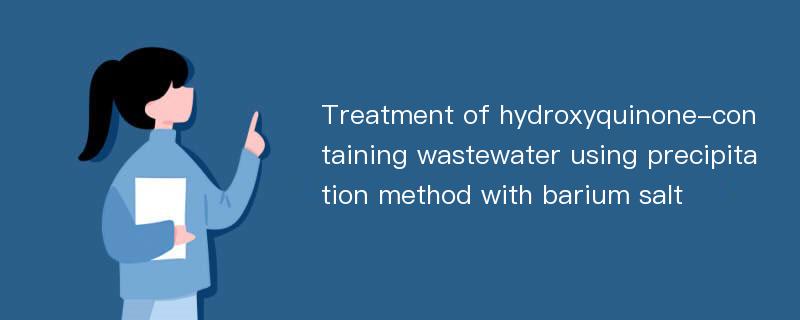
论文摘要
Hydroxyquinone compounds, such as 1,4-dihydroxyanthraquinone and alizarin sulfonate, are widely used in dye manufacturing, pharmaceutical manufacturing, and other industries. However, the treatment of hydroxyquinone-containing wastewater has seldom been examined. This study used a precipitation method with barium salt to treat nano-silver industrial wastewater. The results show that barium chloride was a suitable reagent for significantly degrading COD and color from nano-silver wastewater. When the initial pH value was 10.5, 8 g of BaCl2·2 H2 O were added to 100 mL of wastewater. After reaction at 15℃ for 1 h, the removal efficiencies of COD and color in the nano-silver wastewater were 85.6% and 97.1%, respectively. Simulated wastewater containing sodium alizarin-3-sulfonate(ARS) or purpurin was used to further investigate the removal mechanism of hydroxyquinone compounds. Fourier transform infrared spectroscopy, X-ray diffraction, and some related experiments showed that hydroxyquinone compounds can directly react with barium ions in the solution so as to transfer from wastewater to precipitate. In addition, the newly produced barium sulfate particles have positive surface charges, which can improve the removal efficiency of hydroxyquinone compounds due to electrostatic attraction.
论文目录
文章来源
类型: 期刊论文
作者: Qun-chao Wang,Shu-gen Liu,Hua-ping Gao
来源: Water Science and Engineering 2019年01期
年度: 2019
分类: 工程科技Ⅱ辑,工程科技Ⅰ辑
专业: 环境科学与资源利用
单位: School of Environmental Science and Engineering, Kunming University of Science and Technology
基金: supported by the National Natural Science Foundation of China(Grant No.51868029),the Yunnan Applied Basic Research Projects(Grant No.2016FB093)
分类号: X703
页码: 55-61
总页数: 7
文件大小: 1062K
下载量: 5
